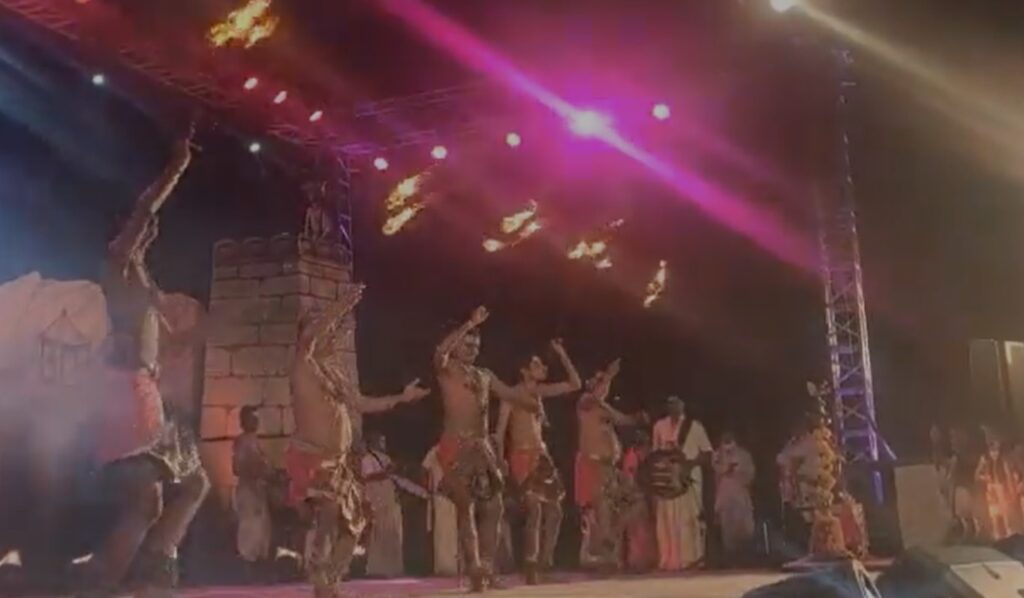Veeranatyam is a folk dance performed to honor Lord Shiva. It is a very devotional dance. The name is derived from Veerabhadra – the form of Lord Shiva worshipped in this dance. This devotional dance for Lord Shiva displays a lot of rage and fierce postures.

Veeranatyam dance is from Andhra Pradesh. It is also known as Veerabhadra Natyam or Natyam. On breaking the term Veeranatyam we will get Veera that means brave and Natyam that means dance. Thus Veeranatyam means dance of the brave.
This dance is mostly performed by men. They worship Shiva in his most fierce form Veerbhadra. Veerbhadra is said to be one of the oldest godly incarnations on earth.
Story of Veerabhadra
Once Daksha, father of Goddess Sati, organized a Yagya. Everyone was invited except Lord Shiva. Wanting to meet her childhood friends, Sati went to this event without her husband.
She was not treated very well at her father’s place. Soon an argument broke out between Daksha and Sati. When she couldn’t take the insult of her husband anymore, she self-immolated herself. Veeranatyam is based on this story of Sati sacrificing herself using the Agni within called Yogagani.
Shiva loved Sati dearly. He was heartbroken and devastated by her death. He cut a lock of his hair from which two incarnations appeared – Veerbhadra and Bhadrakali. These two brought fierce power to the world which was too powerful to bear. The destruction and sadness that followed after these incarnations were tremendous.
It is important to know this tale before we try to understand Veeranatyam, as the true emotions can only be known after knowing how Shiva must have felt when Sati died. It is these emotions that dancers try to bring on stage when they perform Veeranatyam.
Veeranatyam Dance Performance
The dance starts with dancers appearing on stage with a plate called “Veerabhadra Pallem” carried camphor fire. This plate is so big that it is carried out on hands from elbow to palm. Then the dancers dance till the fire extinguishes. A priest holding chants in the background while the dance performance is going on. The dancers stay in colorful clothes that represent rage, anger, and passion. The colors also represent fire as it is the most fearful aliment in the world.
The performance is very hard and tiresome. If dancers do not have enough experience they might hurt themselves. It takes one or two years’ continuous practice to perform this dance. Nowadays, it gets performed in temples or while taking oaths.

Pingback: Folk Dances of India - Auchitya
Pingback: All Folk Dances of India - Auchitya
Pingback: All Folk Dances of India - Auchitya
Pingback: Nainital - Trip to the Lake City - Auchitya
Pingback: All Folk Dances of India - Statewise Complete List - Auchitya